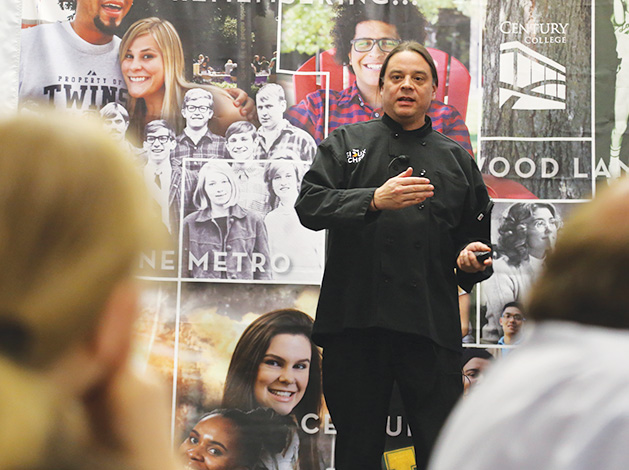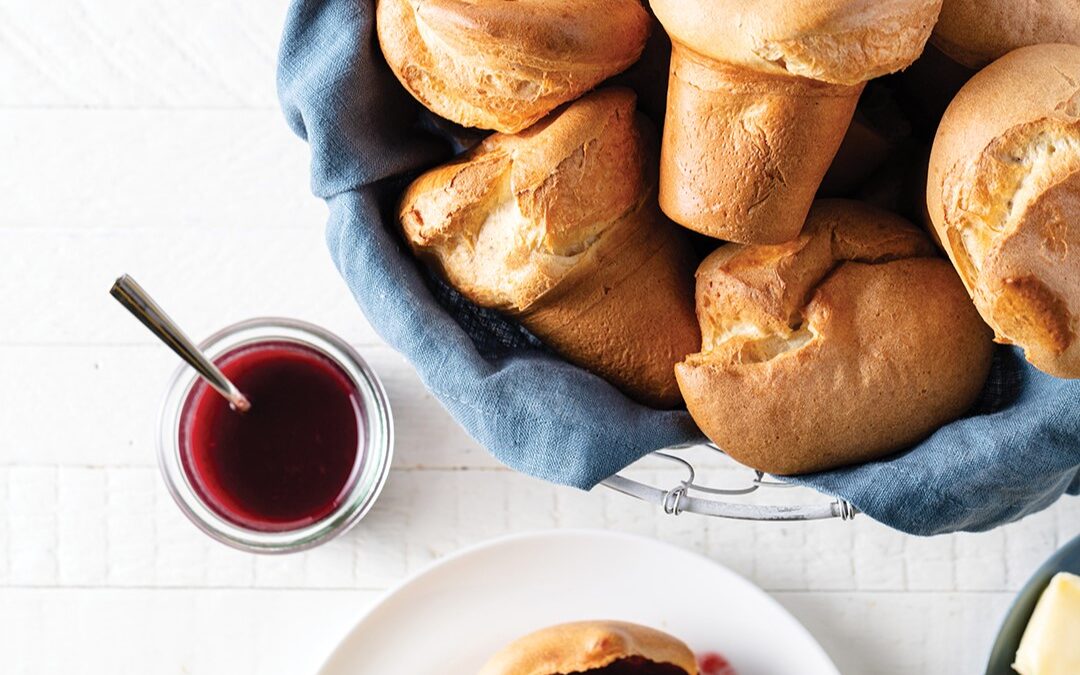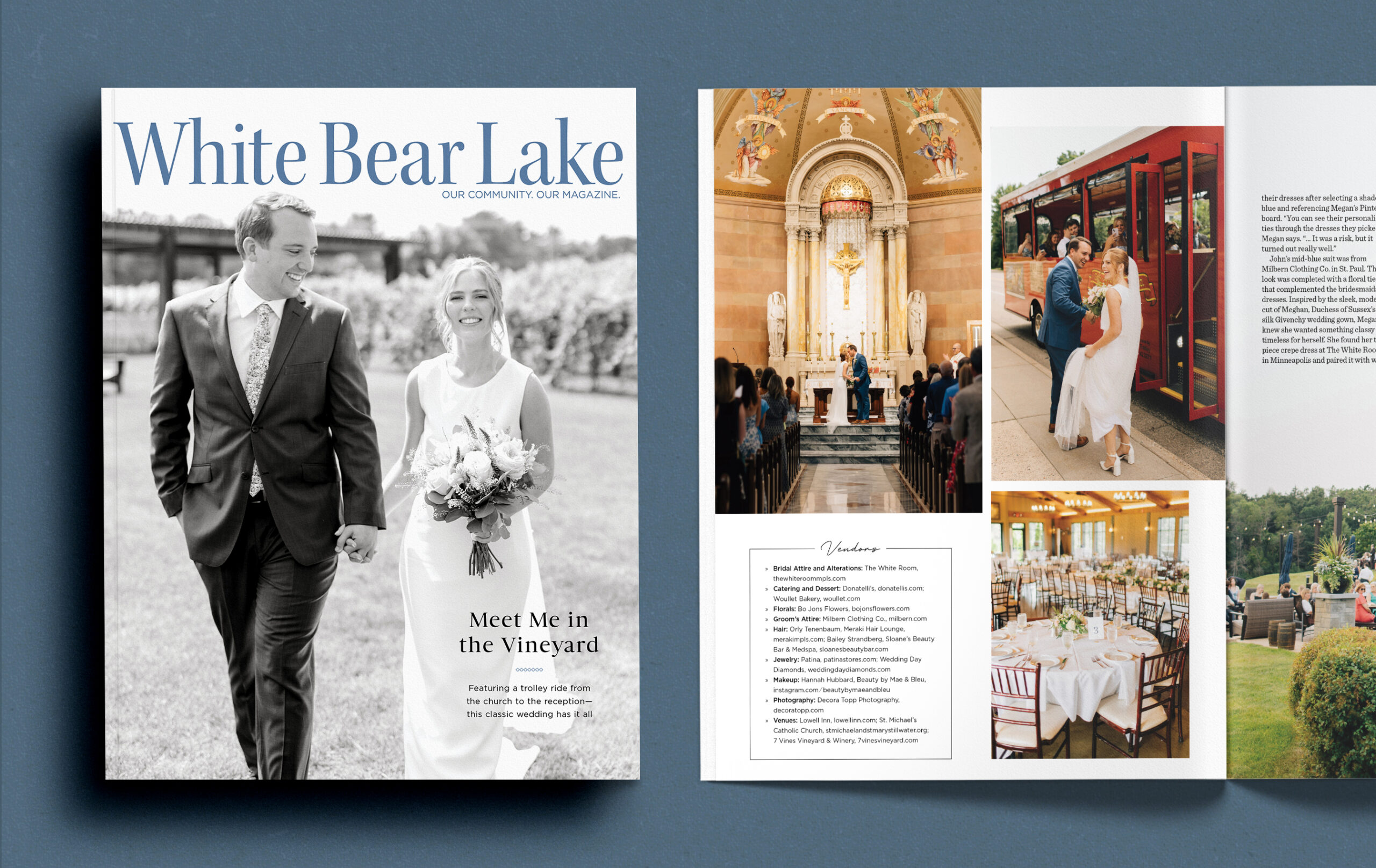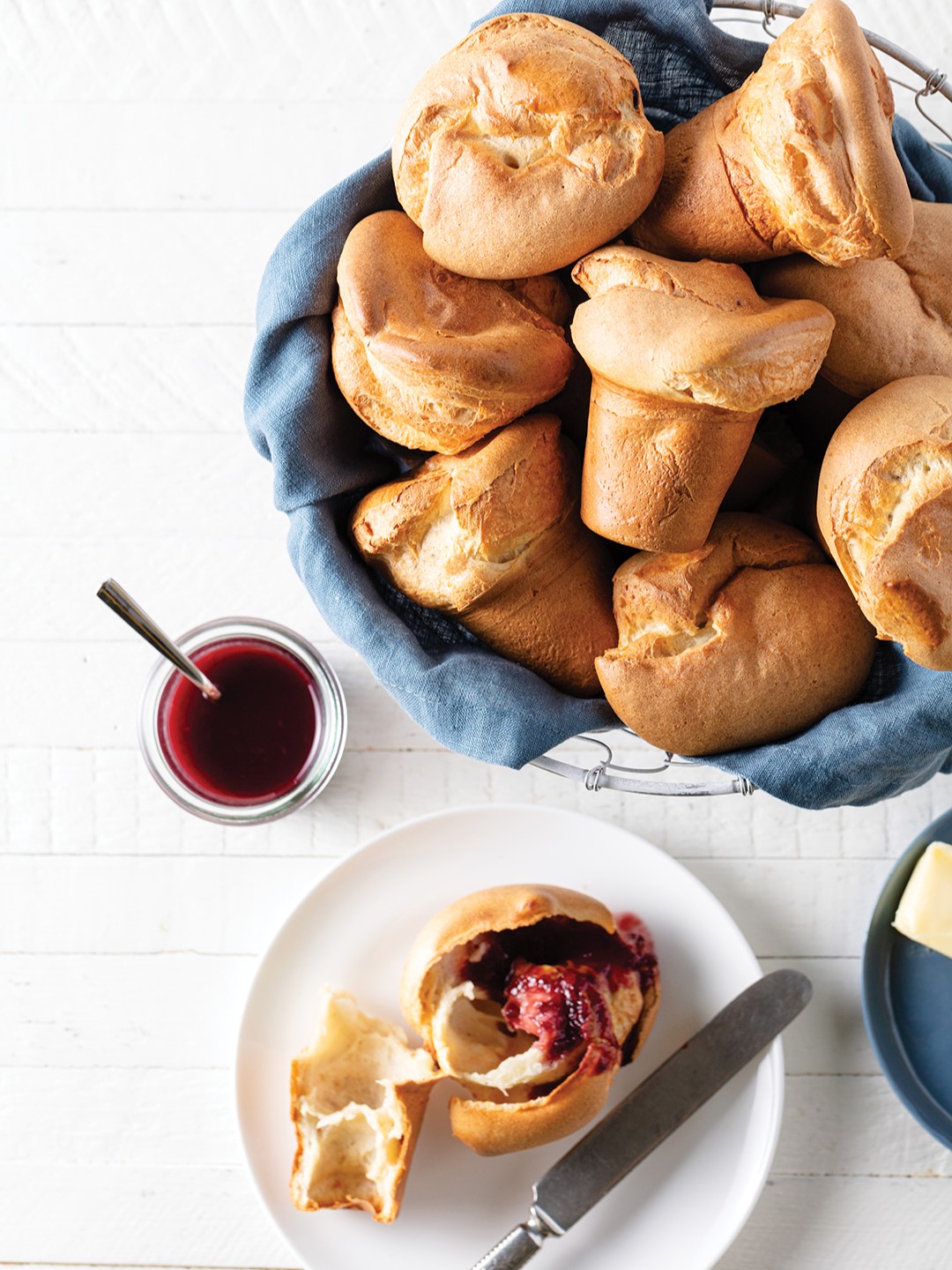
Photo: Teresa Callies
Lakota chef Sean Sherman speaks at Century College.
As part of Century College’s efforts to increase inclusivity and diversity, chef and award-winning cookbook author Sean Sherman, an enrolled member of the Oglala Lakota from Pine Ridge, South Dakota, was invited to speak at the college in November. Sherman, along with his partner Dana Thompson co-owns the catering company Sioux Chef. Sherman presented a lecture and provided a catered tasting menu. He also signed copies of his book The Sioux Chef’s Indigenous Kitchen, which he wrote together with Beth Dooley. The book was presented with the 2018 James Beard Foundation Book Award.
Century’s associate director of student life and director of LGBTQ services Maxwell Poessnecker organized the presentation to celebrate the importance of indigenous and Native people on campus.
Sioux Chef is a catering business, but it’s also much more.
“We exist to educate and make indigenous foods more accessible,” says Sherman. His goals for Sioux Chef are wide-reaching. “It’s about building a culture of chefs in Native communities and tapping into that ancestral knowledge. It’s a generational and a spiritual battle. It’s a choice to prepare Native food. Hopefully, people will return to action and responsibility and the indigenous principles of human interaction and relationship with the landscape,” says Sherman.
While the cuisine that Sioux Chef prepares is healthy, Sherman is more concerned with promoting historical Native cuisine than in healthy cooking as a goal in itself. “I’m not pushing healthy food, but traditional food,” Sherman says. “It’s traditional food in a modern context, and it just happens to be healthy.”
Thompson says, “We eliminate the colonial ingredients [when we prepare food], so we don’t use wheat flour, dairy or refined sugars. Once you eliminate those, it drops the glycemic content really low. We also don’t use beef, pork or chicken [so we can] showcase the bounty of [other] foods all around us—turkey, pheasant, bison and the bounty of our fishing here in Minnesota specifically. So many berries and plants are not only delicious, but packed with vitamins and flavonoids, which help us fight diseases like cancer.”
What are colonial ingredients? Thompson says, “Before 1492, Native people had plenty of access to all of the wild edibles and game throughout [this] and other regions. Then came colonization and suddenly they were stripped of land and natural resources such as game, agriculture, seeds, etc. Forced assimilation stripped them further of their language, and many beautiful cultural traditions, including their food systems.”
And while Sherman and Sioux Chef have received wide acclaim, achieving fame is not the priority. “It’s not about me becoming a famous chef,” Sherman says. “It’s that Native people had amazing flavors to play with, and we are just putting that in a modern context.”
Sherman discussed Native American ways of land stewardship, cooking, harvesting, preserving food, hunting and fishing. He also discussed some lighter topics, including his cooking style, how he began cooking and how he started his business, says Poessnecker.
There was delicious food provided along with knowledge. “We offered a ‘three sisters’ soup which includes corn, beans and squash, which together make a complete protein, and cedar maple tea which you can make using the trees in your yard! It’s so good and … packed with vitamin C,” says Thompson.
Poessnecker expected about 150 people to attend, but over 400 showed up. “After the event, I had droves of folks thanking me, not only for bringing Sean and having him share his love and light, but for helping them envision a more just world,” Poessnecker says.
Sherman shared the recipe below with whitebearlakemag.com:
Cedar Tea recipe from Sioux Chef
Cedar is a sacred tree and is part of many ceremonies. It’s also used to purify homes and as a medicine. The tea of simmered branches is used to treat fevers, rheumatic complaints, chest colds, and flu. This tea is delicious good either hot or cold.
- 2 cups fresh cedar boughs (Make sure you used wood intended for use with food. Most wood at lumber stores is chemically treated and should not be used for this purpose.)
- 4 cups boiling water
- Maple syrup to taste
Simmer the cedar in the boiling water for about 10 minutes until the water becomes a golden color. Strain off the cedar. Sweeten with maple syrup to taste.






















